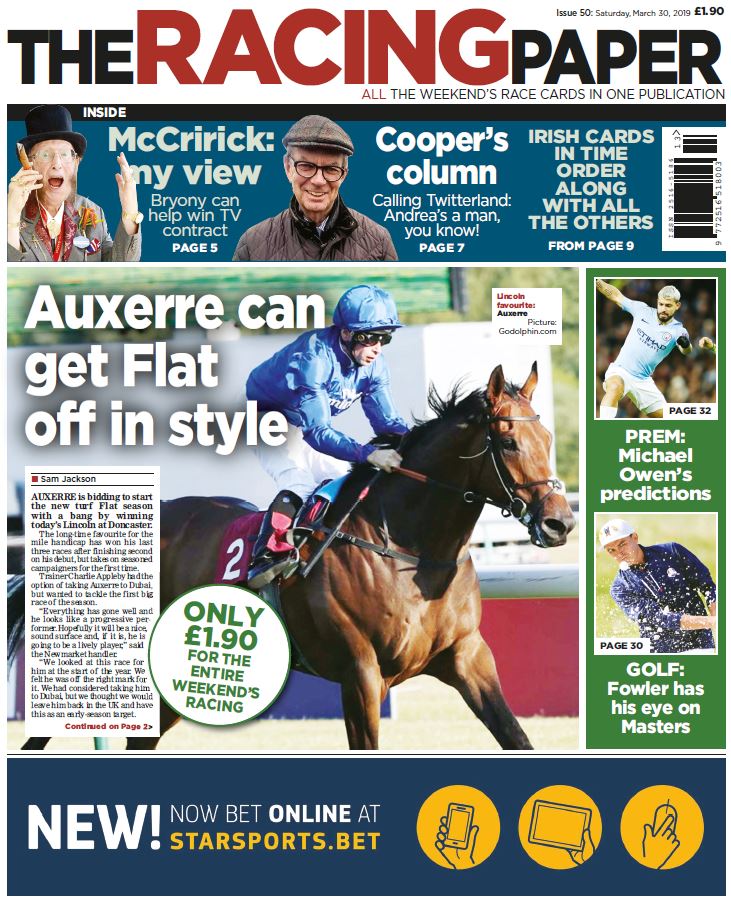News
The Importance of Elimination in the Selection Process

I have been aware of the value of the elimination process since the early sixties, but not to the extent that I am now. In my earlier days, I concentrated on statistics related to the jockey, sire and trainer but not those that I am going to write about today. This is because of the extremely interesting discoveries Jess and I made whilst researching some of the top trainers in all Codes of Racing for our new book, Winning with the Racing Post.
John Gosden scored a fantastic number of winners in the last Flat season. But he has a weak spot which we did not find until we began our research. He sent four horses wearing blinkers and a tongue-tie to the track and lost with all four. Whilst four is not high in the elimination stakes, it can certainly be considered very seriously, and this is the first offering that we must give you. But our second is even more likely to be maintained. In the cheekpieces and tongue-tie category, he saddled seven horses and did not win with any.
Gosden’s overall figure is worth mentioning here. His total strike-rate for the seasons we examined was 23.8%. But when his charges wore hoods in their respective races, he achieved a phenomenal strike-rate of 24.0%. This is just 0.2% above his overall seasonal tally. Hoods are one of the lowest pieces of equipment in terms of win strike-rate and they hover around the 6-7% mark in the “Story of the Symbols” section in the Racing Post. As his strike-rate is 17% higher than this figure, we have a tremendous opportunity for profit. He sent seventy-five horses to the track and won with eighteen of them. His subsequent loss of £6.90p is very small in these circumstances, but this could be turned into a good profit with careful selectivity. I make no apologies for diverting from the negative elimination stance because it enriches our total experience as horseracing investors.
However, I will return to the negative statistics with our next trainer, William Haggas. He sent out four runners in the blinkers and tongue-tie category and lost with them all.
A similar story can be told with Mark Johnston. He is one of the top trainers for being able to assess the health of his charges. I believe this is also reflected by his insight into how to remedy wayward and indifferent performances by applying specific pieces of equipment. However, it is interesting that he sent out six runners wearing a hood and failed to produce a winner.
In contrast, Nicky Henderson achieved a strike-rate of 26.8% with his runners wearing hoods. Generally, we have an overall benchmark for all categories before placing a bet. In this group, Henderson is 16% above our benchmark. Not only that, but his horse’s performance with hoods was 0.7% above his overall strike-rate. I hope that the statistics I have given you so far relating to elimination have created some surprise and satisfaction. As we all know, Henderson is one of the top trainers in the country in his chosen discipline. Any statistics one can gather that are under the radar of most horseracing investors will us a tremendous edge when hoods are placed on Henderson’s charges.
The consistency demonstrated by three years of research confirms this factor. In 2017, it was 25.70% 29.40% in 2018 and 25.00% in 2019. These are remarkable figures that can give us confidence to seek them out and bet on them in the appropriate races.
From one remarkable statistic to another, but this time in the negative sense. When Philip Hobbs sent out horses wearing blinkers during our research period between 2017-2019, he had a 0/21 strike-rate. I have not done the research on how many of these twenty-one horses started favourite or were listed in the first three of the Racing Post’s betting forecast. But it will be very useful to identify them in future races as with further lateral thinking, you have a superb chance of selecting the winner at a good price by betting two horses in each race. Considering the; poor performance of Hobbs’ horses wearing blinkers, all the other horses in the field can now be deemed “value bets.”
I have full respect for most trainers and Paul Nicholls is very high up on my list. This is especially after reading his autobiography which I found honest and succinct. In the blinkers and tongue-category, this trainer sent thirty-five runners to the course and won with just one of them for a strike-rate of 2.9%. This seems a solid enough elimination factor for me and because he has a strong following, we should benefit considerably from this knowledge.
This article is part of a chapter on equipment in our new book, Winning with the Racing Post. I am confident you will appreciate your racing and betting activities much more after reading this publication. For more details, please see our advertisement. Until next time, good investing.
The post The Importance of Elimination in the Selection Process appeared first on Racing Ahead.







